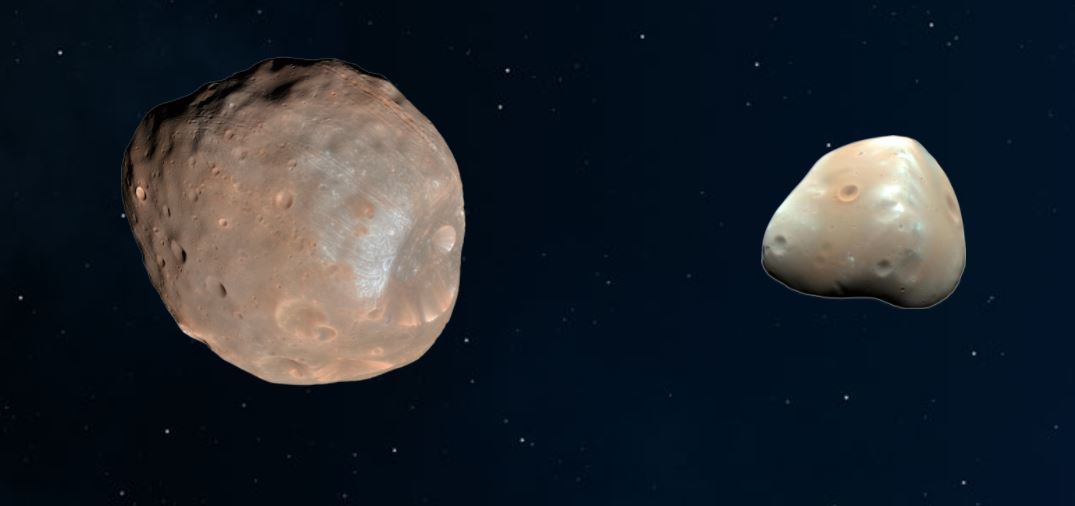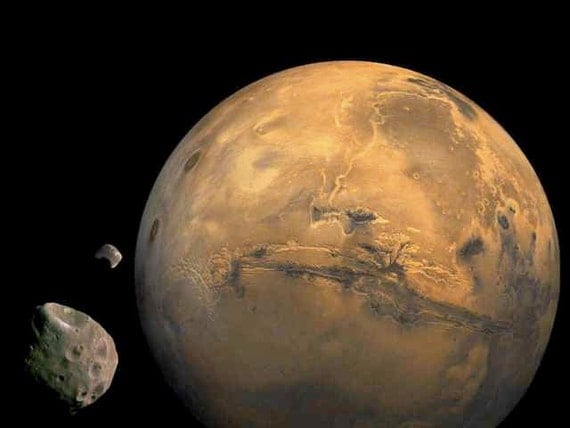Mars has two satellite moons and no rings one of its moons phobos is expected to collide with mars in the future which could create a ring system

Mars: The Red Planet's Moons and the Possibility of Rings
 Image Source: NASA
Image Source: NASA
Mars is the fourth planet from the Sun in our solar system and is often referred to as the “Red Planet” due to its reddish appearance. Among its distinctive features, Mars has two satellite moons, Phobos and Deimos, and an absence of rings, which are commonly observed around other gas giant planets like Saturn. However, the future of its largest moon, Phobos, holds an intriguing possibility that could result in a unique ring system enveloping Mars.
Phobos, the larger of the two moons, orbits Mars at an exceptionally close distance compared to natural satellites around other planets. Its diameter is approximately 22.2 kilometers, making it one of the smallest moons in the solar system. Phobos is named after the Greek god Phobos, meaning fear or panic, who was a son of Ares (Mars) and the personification of fright.
 Image Source: Etsy
Image Source: Etsy
Scientists have studied the orbit of Phobos and have come to the realization that its distance from Mars is gradually decreasing. It is estimated that in roughly 20 to 40 million years, Phobos will collide with Mars, due to the tidal forces exerted on it by the planet’s gravity. This impending collision could have captivating consequences, potentially leading to the formation of a remarkable ring system around Mars.
If Phobos were to collide with Mars, the energy of the impact would result in the ejection of a significant amount of debris into space. This debris could form a ring system surrounding Mars, akin to the rings of Saturn. Although the exact composition and characteristics of such a ring system remain uncertain, its emergence would undoubtedly imbue Mars with an astonishing celestial adornment.
The potential creation of a ring system around Mars presents a fascinating opportunity for scientists to further study the complex dynamics of planetary evolution. By analyzing the composition and structure of the ring system, researchers can gain valuable insights into the processes governing the formation of celestial bodies and their interactions within a planetary system.
In conclusion, Mars currently possesses two satellite moons, Phobos and Deimos, while lacking a ring system. However, the future holds the possibility of a collision between Mars and Phobos, which could give rise to an extraordinary ring system enveloping the Red Planet. This unique event would not only provide a captivating spectacle for astronomers and space enthusiasts but also deepen our understanding of the intricate mechanisms that shape the planets in our solar system.
Sources:
Tags
Share
Related Posts
Quick Links
Legal Stuff

